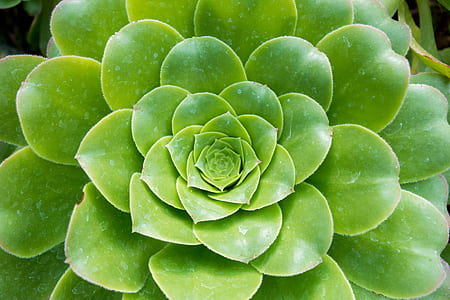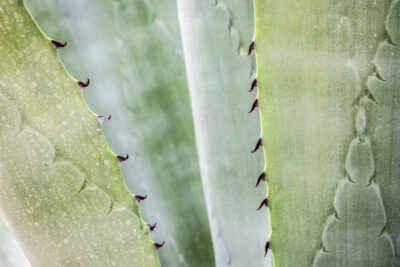
Using Miracle-Gro on Succulents: Is it Safe or Harmful?

When it comes to caring for succulents, there is often a debate about the use of fertilizers. One popular brand that many gardeners turn to is Miracle-Gro. However, there are concerns about whether using Miracle-Gro on succulents is safe or harmful. In order to make an informed decision, it is important to understand the needs of these unique plants and the potential effects of using chemical fertilizers.
We will delve into the world of succulent care and explore the pros and cons of using Miracle-Gro as a fertilizer. We will discuss the specific requirements of succulents and examine how chemical fertilizers can impact their growth and overall health. Additionally, we will explore alternative methods of fertilization that may be more suitable for these low-maintenance plants. By the end, you will have the knowledge needed to determine whether using Miracle-Gro on your succulents is the right choice for you.
- Yes, it is safe to use Miracle-Gro on succulents
- Miracle-Gro provides essential nutrients for succulent growth
- However, it is important to dilute the Miracle-Gro according to instructions
- Over-fertilizing with Miracle-Gro can cause harm to succulents
- Be mindful of the specific needs of your succulent species
- Some succulents may require less fertilizer than others
- Monitor your succulents for any signs of nutrient deficiency or excess
- Adjust the frequency and amount of Miracle-Gro based on your succulent's response
- Always follow the instructions on the Miracle-Gro packaging for best results
- If in doubt, consult a gardening expert for specific advice on your succulents
- Frequently Asked Questions
Yes, it is safe to use Miracle-Gro on succulents
Many succulent enthusiasts wonder whether it is safe or harmful to use Miracle-Gro, a popular brand of plant fertilizer, on their beloved succulents. The good news is that using Miracle-Gro on succulents is generally safe and can provide the necessary nutrients for their growth.
Understanding Miracle-Gro:
Miracle-Gro is a well-known brand that offers a wide range of plant fertilizers, including formulas specifically designed for succulents. These fertilizers contain a balanced blend of essential nutrients, such as nitrogen, phosphorus, and potassium, which are crucial for plant growth.
Benefits of using Miracle-Gro on succulents:
 Can Succulents Survive the Cold Winter Months? Tips for Winter Care
Can Succulents Survive the Cold Winter Months? Tips for Winter Care- Promotes healthy growth: Miracle-Gro provides succulents with the necessary nutrients to support their growth and overall health. It helps in developing strong roots, promoting lush foliage, and encouraging blooming.
- Convenience: Miracle-Gro is readily available in garden centers and online, making it a convenient option for succulent owners.
- Easy to use: The instructions on the Miracle-Gro packaging are straightforward, making it simple for even novice gardeners to apply the fertilizer correctly.
Precautions when using Miracle-Gro on succulents:
While Miracle-Gro is generally safe to use on succulents, it is important to follow a few precautions to ensure the well-being of your plants:
- Dilute the fertilizer: Succulents are known for their ability to thrive in low-nutrient environments. To avoid over-fertilization, dilute the Miracle-Gro according to the instructions on the packaging, or use a weaker concentration than recommended.
- Apply sparingly: Succulents have a slower growth rate compared to other plants, so they require less fertilizer. Apply Miracle-Gro sparingly, usually once every two to four weeks during the growing season.
- Monitor for signs of over-fertilization: Excessive fertilizer can lead to burnt leaves or root damage in succulents. Keep an eye on your plants for any signs of over-fertilization, such as yellowing or wilting leaves, and adjust your fertilization routine accordingly.
Alternatives to Miracle-Gro:
If you prefer to use alternative fertilizers on your succulents, there are several options available. Some succulent enthusiasts opt for organic fertilizers, such as compost or worm castings, to feed their plants. These options provide a more natural approach to plant nutrition.
Conclusion:
Using Miracle-Gro on succulents is generally safe and beneficial for their growth. However, it is essential to follow the instructions and use the fertilizer sparingly to avoid over-fertilization. Additionally, monitoring your plants for any signs of nutrient imbalance is crucial for their overall health. Ultimately, the choice of fertilizer depends on personal preference, and alternative options like organic fertilizers are also viable for succulent care.
Miracle-Gro provides essential nutrients for succulent growth
 The Lifespan of Indoor Succulents: How Long Do They Typically Live?
The Lifespan of Indoor Succulents: How Long Do They Typically Live?Succulents, with their unique ability to store water in their leaves, are popular houseplants because of their low-maintenance nature and stunning appearance. However, like any other living organism, succulents require nutrients to thrive and reach their full potential. This is where Miracle-Gro, a well-known brand of plant fertilizers, comes into play.
Miracle-Gro is formulated to provide a balanced mix of essential macro and micronutrients that plants need for healthy growth. It contains nitrogen, phosphorus, and potassium, commonly referred to as NPK, which are vital for succulent development. Additionally, Miracle-Gro also contains other essential elements like calcium, magnesium, and trace minerals that aid in overall plant health.
Benefits of using Miracle-Gro on succulents:
- Promotes growth: The balanced nutrient composition of Miracle-Gro helps stimulate root development and encourages lush foliage growth in succulents.
- Enhances color: Succulents treated with Miracle-Gro often display more vibrant and intense colors, making them visually appealing additions to any indoor or outdoor space.
- Boosts blooming: Certain Miracle-Gro formulations contain additional phosphorus, which aids in flower production. Using these variants can help succulents produce beautiful blooms.
- Convenience: Miracle-Gro is readily available in most garden centers and is simple to apply, making it a convenient option for succulent enthusiasts.
However, while Miracle-Gro can provide numerous benefits to succulents, it's important to use it in moderation, as succulents have specific nutritional requirements. Over-fertilizing can lead to nutrient imbalances and cause adverse effects on your plants.
Considerations when using Miracle-Gro on succulents
To ensure the safety and health of your succulents, keep the following considerations in mind:
- Follow instructions: Always read the instructions provided on the Miracle-Gro packaging and follow the recommended dosage. Avoid exceeding the recommended amount, as it can harm your succulents.
- Dilute the fertilizer: Succulents have a lower nutrient requirement compared to other plants. Diluting the Miracle-Gro fertilizer with water can help prevent over-fertilization.
- Frequency of application: Succulents generally require less frequent feeding compared to other houseplants. Apply the fertilizer sparingly, typically once every few months, during the active growing season.
- Observe your plants: Monitor your succulents closely after applying Miracle-Gro. If you notice any signs of leaf discoloration, wilting, or other abnormalities, it may be a sign of over-fertilization. In such cases, flush the soil with water to remove excess nutrients.
By following these guidelines and using Miracle-Gro responsibly, you can provide your succulents with the necessary nutrients they need to flourish without causing harm.
However, it is important to dilute the Miracle-Gro according to instructions
 Easy-care succulents: A guide to slow-growing, low-maintenance plants
Easy-care succulents: A guide to slow-growing, low-maintenance plantsWhen it comes to caring for succulents, many gardeners wonder if using Miracle-Gro is a safe and effective option. Miracle-Gro is a popular brand of fertilizers that are known for their ability to promote plant growth and health. While it can be tempting to use Miracle-Gro on your succulents, it is crucial to follow the instructions and dilute the fertilizer properly.
Using Miracle-Gro on succulents can be safe and beneficial when done correctly. However, applying it directly without dilution can be harmful to these plants that are known for their ability to thrive in arid conditions. Concentrated fertilizers can lead to over-fertilization, causing root burn or even death of your succulents.
When using Miracle-Gro on succulents, always dilute the fertilizer according to the instructions on the packaging. This will ensure that the nutrients are delivered in the proper proportions and won't overwhelm the plants. Diluting the fertilizer also helps prevent the buildup of salts, which can be harmful to succulents.
Here are some important tips to keep in mind when using Miracle-Gro on your succulents:
- Read and follow the instructions: Before applying Miracle-Gro to your succulents, carefully read the instructions on the packaging. This will provide you with essential information on how much fertilizer to use and how often to apply it.
- Use a well-draining soil mix: Succulents thrive in well-draining soil, so make sure to use a mix specifically formulated for these plants. This will help prevent waterlogging and potential nutrient imbalances.
- Dilute the fertilizer: Do not apply Miracle-Gro directly to your succulents. Instead, dilute it according to the instructions. Typically, a general guideline is to mix 1/4 to 1/2 teaspoon of Miracle-Gro per gallon of water. Adjust the dilution ratio based on the specific instructions provided.
- Apply the dilution sparingly: Succulents do not require frequent fertilization. Apply the diluted Miracle-Gro sparingly, usually once every one to two months during the growing season. Over-fertilization can do more harm than good.
- Monitor your plants: Keep a close eye on your succulents after applying Miracle-Gro. If you notice any signs of over-fertilization, such as wilting, discoloration, or stunted growth, flush the soil with water to help dilute the excess nutrients.
Remember, using Miracle-Gro on your succulents can be safe and beneficial as long as you dilute it properly and use it sparingly. Following the instructions provided by the manufacturer and monitoring your plants' health will help ensure their well-being and longevity.
Over-fertilizing with Miracle-Gro can cause harm to succulents
When it comes to caring for succulents, one of the most debated topics is whether or not it is safe to use Miracle-Gro as a fertilizer. While Miracle-Gro is a popular choice for many gardeners, it is important to understand that succulents have specific needs and requirements that differ from other plants.
 Preventing Succulent Stretching: Tips for Compact Growth
Preventing Succulent Stretching: Tips for Compact GrowthThe dangers of over-fertilizing
Succulents are known for their ability to thrive in dry and arid conditions. They have adapted to store water in their leaves, stems, or roots, allowing them to survive in environments with limited water availability. However, this also means that they are not accustomed to receiving excessive amounts of nutrients.
Using Miracle-Gro or any other fertilizer on succulents can be harmful if not done with caution. Over-fertilizing can lead to an imbalance of nutrients in the soil, causing the roots of the succulents to burn. This can result in root rot, stunted growth, or even the death of the plant.
Understanding the needs of succulents
Succulents have adapted to grow in nutrient-poor soil, so they do not require as much fertilization as other plants. They are capable of absorbing nutrients from the soil efficiently and can even survive in nutrient-deprived conditions. Therefore, it is crucial to provide them with a balanced and diluted fertilizer solution, if necessary.
It is recommended to use a fertilizer specifically formulated for succulents, as it will provide the necessary nutrients in the right proportions. These specialized fertilizers are designed to meet the unique needs of succulents, ensuring their health and growth without causing harm.
Tips for using Miracle-Gro on succulents
If you still choose to use Miracle-Gro on your succulents, it is essential to follow a few guidelines to minimize any potential harm:
- Dilute the fertilizer: Mix the Miracle-Gro fertilizer with water, following the instructions provided. Avoid using the fertilizer at full strength, as this can be too potent for succulents.
- Apply sparingly: Use a small amount of the diluted fertilizer solution to avoid over-fertilizing. Succulents only require a light feeding once or twice a year.
- Monitor the plant: Keep a close eye on your succulents after applying the fertilizer. If you notice any signs of stress, such as discoloration or wilting, it may be a sign of over-fertilization. In such cases, flush the soil with water to remove excess nutrients.
- Consider alternative options: If you are unsure about using Miracle-Gro or want to err on the side of caution, there are organic and succulent-specific fertilizers available in the market. These options are formulated to provide the necessary nutrients without risking harm to your succulents.
Remember, the key to successfully using any fertilizer on succulents is moderation. It is better to under-fertilize than to over-fertilize, as succulents are naturally adapted to thrive in nutrient-poor environments. By understanding their specific needs and using fertilizers judiciously, you can ensure the health and longevity of your succulents.
Be mindful of the specific needs of your succulent species
 Can Frozen Succulents Bounce Back After Suffering Cold Damage?
Can Frozen Succulents Bounce Back After Suffering Cold Damage?When it comes to using Miracle-Gro on succulents, it's essential to be mindful of the specific needs of your succulent species. While Miracle-Gro is a popular fertilizer that promotes healthy growth in many plants, succulents have unique requirements that may differ from other types of plants.
Understand the nature of succulents
Succulents are known for their ability to store water in their leaves and stems, allowing them to thrive in arid conditions. These plants have adapted to survive in environments with minimal rainfall by storing water for extended periods. As a result, they have different nutritional needs compared to other plants.
- Low nitrogen requirements: Succulents prefer a fertilizer with low nitrogen content. Nitrogen promotes leafy growth, which is not ideal for succulents as it can make them susceptible to rot.
- High phosphorus and potassium needs: Succulents thrive when provided with a fertilizer that is rich in phosphorus and potassium. These nutrients help promote healthy root development and overall plant vigor.
- Well-draining soil: In addition to the right fertilizer, succulents also require well-draining soil. This helps prevent waterlogged roots, which can lead to root rot.
Consider the risks of using Miracle-Gro on succulents
While Miracle-Gro is a widely used fertilizer, it may not be the best choice for succulents. The high nitrogen content in Miracle-Gro can cause succulents to grow too quickly, resulting in weak and leggy plants that are more prone to disease and pests.
- Potential for root rot: The excess nitrogen in Miracle-Gro can lead to excessive growth, making the plants more susceptible to root rot. Succulents prefer a slower growth rate to maintain their compact and sturdy form.
- Imbalanced nutrient ratios: Miracle-Gro is formulated for a wide range of plants, which means the nutrient ratios may not be ideal for succulents. The high nitrogen content can throw off the desired phosphorus-to-nitrogen ratio, negatively affecting the plant's overall health.
It's important to note that every succulent species is unique, and their specific needs may vary. Some succulent enthusiasts have reported success using diluted Miracle-Gro on certain species, while others have experienced negative effects. It's always best to research the specific needs of your succulent species and choose a fertilizer that aligns with those requirements.
If you're unsure about using Miracle-Gro on your succulents, there are alternative fertilizers available that are specifically formulated for succulents. These products often have lower nitrogen content and the ideal phosphorus-to-nitrogen ratio for promoting healthy growth in succulents.
Ultimately, the choice of whether to use Miracle-Gro on your succulents is up to you. However, it's crucial to be informed about the specific needs of your plants and the potential risks associated with using Miracle-Gro. By understanding your succulent's requirements and providing them with the appropriate care, you can ensure their long-term health and vitality.
Some succulents may require less fertilizer than others
 Reviving Dead Succulent Roots: A Step-by-Step Guide to Restore Health
Reviving Dead Succulent Roots: A Step-by-Step Guide to Restore HealthWhen it comes to caring for succulents, one of the most common questions that arises is whether or not it is safe to use Miracle-Gro on these plants. Succulents are known for their ability to thrive in arid conditions and their unique ability to store water in their leaves and stems. Due to their unique needs, it is important to understand the potential risks and benefits of using Miracle-Gro on succulents.
The Importance of Understanding Succulent Fertilizer Needs
Before we dive into the question of whether or not Miracle-Gro is safe, it is essential to recognize that not all succulents have the same fertilizer requirements. Some succulents, such as cacti, are adapted to survive in nutrient-poor environments and may require less fertilizer. On the other hand, certain succulents, like Echeverias and Aeoniums, may benefit from occasional fertilization to maintain optimal growth and health. It is crucial to research and understand the specific fertilizer needs of your succulent species before applying any fertilizers.
The Potential Risks of Using Miracle-Gro on Succulents
While Miracle-Gro is a popular and widely available fertilizer, it is important to be cautious when using it on succulents. Miracle-Gro is a synthetic fertilizer that contains nitrogen, phosphorus, and potassium—also known as NPK. Succulents are generally adapted to thrive in nutrient-poor soil, and over-fertilizing them with high levels of NPK can lead to several issues.
- Root Burn: Succulents have delicate root systems that can easily be damaged by excessive fertilizer. The high concentration of salts in Miracle-Gro can cause root burn, resulting in stunted growth or even death of the plant.
- Leggy Growth: Over-fertilizing succulents can lead to excessive growth and elongated stems, commonly referred to as "leggy" growth. This can make the plant appear less attractive and may affect its overall health.
- Decreased Water Efficiency: Succulents are adapted to store water in their leaves and stems, allowing them to survive in arid conditions. Over-fertilizing can disrupt this water storage mechanism, making the plant more vulnerable to drought stress.
Alternative Fertilizer Options for Succulents
If you decide to fertilize your succulents, it is crucial to choose a fertilizer that is specifically formulated for these plants. Look for a balanced, water-soluble fertilizer with a low NPK ratio, such as 10-10-10 or 14-14-14. These ratios ensure that your succulents receive the necessary nutrients without the risk of over-fertilization. Additionally, consider using organic fertilizers or slow-release fertilizers, as they provide a more gentle and gradual nutrient release.
 Perennial Succulents: Low-Maintenance Plants for Easy Care
Perennial Succulents: Low-Maintenance Plants for Easy CareConclusion
Using Miracle-Gro on succulents can be potentially harmful if not used properly. It is vital to understand the specific fertilizer needs of your succulent species and to avoid over-fertilizing. Consider alternative fertilizer options with balanced NPK ratios or opt for organic or slow-release fertilizers. By providing the right amount of nutrients in a controlled manner, you can help your succulents thrive and maintain their unique beauty.
Monitor your succulents for any signs of nutrient deficiency or excess
It is important to closely monitor your succulents for any signs of nutrient deficiency or excess when using Miracle-Gro or any other fertilizer. While Miracle-Gro is a popular choice for many gardeners, it is essential to understand its potential effects on succulents.
1. Nutrient deficiency:
- Check for symptoms such as pale or yellow leaves, stunted growth, or weak stems.
- If you notice any of these signs, it may indicate a lack of essential nutrients.
- Miracle-Gro contains a balanced blend of macronutrients (nitrogen, phosphorus, and potassium) and micronutrients (iron, manganese, zinc, etc.), which can help address nutrient deficiencies.
- Follow the recommended dosage instructions provided by the manufacturer to avoid over-fertilization.
2. Nutrient excess:
- Over-fertilization can lead to nutrient excess in succulents, causing harm rather than benefiting them.
- Excessive fertilization can result in burnt or discolored leaves, deformed growth, or even plant death.
- Monitor your plants for any signs of fertilizer burn, such as brown or scorched leaf tips.
- If you notice these symptoms, it is crucial to flush out the excess nutrients by thoroughly watering the plant.
3. Importance of dilution:
 Protecting Outdoor Succulents in Heavy Rain: Essential Tips
Protecting Outdoor Succulents in Heavy Rain: Essential Tips- When using Miracle-Gro or any fertilizer on succulents, it is recommended to dilute the concentration to half or a quarter of the recommended strength.
- This dilution helps prevent nutrient overload and reduces the risk of damaging your succulents.
- Always read and follow the instructions provided by the manufacturer to ensure proper dilution ratios.
4. Consideration for succulent species:
- Keep in mind that different succulent species have varying nutrient requirements.
- Some succulents may be more sensitive to fertilizers, while others may require a higher nutrient intake.
- Research the specific needs of your succulent species to determine the appropriate fertilizer and dosage.
Using Miracle-Gro on succulents can be safe if done with caution. Monitor your plants closely for any signs of nutrient deficiency or excess, adjust the dosage accordingly, and dilute the fertilizer to avoid harming your succulents. Understanding the needs of your succulents and following proper fertilization practices will help ensure their health and vitality.
Adjust the frequency and amount of Miracle-Gro based on your succulent's response
When it comes to using Miracle-Gro on your succulents, it is important to proceed with caution. While Miracle-Gro is a popular and effective fertilizer for many plants, succulents have unique needs that must be taken into consideration.
One key factor to keep in mind is the frequency of application. Unlike some other plants, succulents do not require frequent fertilization. In fact, over-fertilizing can be detrimental to their health. It is recommended to use Miracle-Gro on your succulents only once every few months, or even less frequently if they are already thriving.
Another important aspect to consider is the amount of Miracle-Gro to use. Succulents have adapted to survive in arid environments with low nutrient availability. Therefore, they require much less fertilizer compared to other plants. It is crucial to dilute the Miracle-Gro according to the instructions provided on the packaging, and to use a weaker concentration than what is recommended for other plants.
Observing your succulent's response to the fertilizer is essential. If you notice any signs of stress or over-fertilization, such as leaf discoloration or wilting, it is crucial to stop using Miracle-Gro immediately. Succulents are highly sensitive to nutrient imbalances, and it is better to err on the side of caution when it comes to fertilizing them.
 How to Safely Clean Succulent Leaves: A Step-by-Step Guide
How to Safely Clean Succulent Leaves: A Step-by-Step GuideAdditionally, it is important to remember that Miracle-Gro is not the only option for fertilizing succulents. There are specialized fertilizers available in the market that are specifically formulated for succulents, considering their unique nutritional requirements. These specialized fertilizers often have a lower nitrogen content, which is beneficial for succulents as excessive nitrogen can lead to weak growth and increased susceptibility to diseases.
Using Miracle-Gro on succulents can be safe if done correctly. However, it is crucial to adjust the frequency and amount of application based on your succulent's response. It is also worth considering specialized fertilizers that are formulated specifically for succulents. By providing your succulents with the right nutrients in the right amounts, you can help them thrive and maintain their unique beauty.
Always follow the instructions on the Miracle-Gro packaging for best results
When it comes to caring for your succulents, it's important to provide them with the right nutrients to ensure their health and growth. One common question that arises among succulent enthusiasts is whether or not it is safe to use Miracle-Gro, a popular brand of plant fertilizer, on succulents. Let's take a closer look at the topic and find out if Miracle-Gro is safe or harmful for your beloved succulents.
Understanding Miracle-Gro
Miracle-Gro is a well-known brand that offers a range of plant fertilizers, including both liquid and granular forms. It is widely used by gardeners and plant enthusiasts to enhance the growth and health of various plants, including flowers, vegetables, and herbs. Miracle-Gro contains a combination of essential nutrients, such as nitrogen, phosphorus, and potassium, that plants need to thrive.
Potential Risks of Using Miracle-Gro on Succulents
While Miracle-Gro can be beneficial for many plants, succulents have unique needs that differ from other types of plants. Succulents are known for their ability to store water in their leaves and stems, making them more resistant to drought conditions. These plants have adapted to survive in arid environments, and their growth patterns and nutrient requirements reflect this.
One potential risk of using Miracle-Gro on succulents is the possibility of over-fertilization. Succulents are typically low-maintenance plants that do not require frequent feeding. Applying excessive amounts of fertilizer, such as Miracle-Gro, can lead to nutrient imbalances and cause harm to your succulents. Over-fertilization can result in leaf burn, root damage, and even death of the plant.
Moreover, succulents are prone to root rot if their soil becomes too moist. The high nitrogen content in Miracle-Gro can promote excessive growth and lead to increased water absorption, which may create a damp environment that is unfavorable for succulents. Therefore, it is crucial to be cautious when using Miracle-Gro on succulents to avoid these potential risks.
 Fertilizing Succulents: To Do or Not in the Growing Season?
Fertilizing Succulents: To Do or Not in the Growing Season?Safe Alternatives for Succulent Fertilization
Instead of using Miracle-Gro, there are safer alternatives available that are specifically formulated for succulents. These specialized fertilizers contain lower levels of nitrogen and higher levels of phosphorus and potassium, which are better suited for the needs of succulents.
Another option is to create your own succulent fertilizer using organic materials. For example, a mixture of well-decomposed compost, worm castings, and a small amount of slow-release organic fertilizer can provide the necessary nutrients for your succulents without the risk of over-fertilization.
While Miracle-Gro can be effective for many types of plants, it is not the ideal choice for succulents. Due to their unique growth patterns and nutrient requirements, succulents require a more tailored approach to fertilization. To ensure the health and longevity of your succulents, it is recommended to use specialized succulent fertilizers or create your own organic fertilizer. Remember to always follow the instructions on the packaging and be mindful of the specific needs of your succulents to achieve optimal growth and well-being.
If in doubt, consult a gardening expert for specific advice on your succulents
When it comes to caring for succulents, many people turn to Miracle-Gro as a popular brand of plant fertilizer. However, before you start using Miracle-Gro on your beloved succulents, it's important to consider whether it is safe or harmful for these unique plants.
The Pros of Using Miracle-Gro on Succulents
- Convenience: Miracle-Gro is readily available in most gardening stores and online, making it a convenient option for many succulent enthusiasts.
- Nutrient-rich: Miracle-Gro contains essential nutrients like nitrogen, phosphorus, and potassium, which can help promote healthy growth and vibrant foliage in succulents.
- Easy to use: The instructions on the Miracle-Gro packaging are straightforward, making it easy for even novice gardeners to apply the fertilizer to their succulents.
The Cons of Using Miracle-Gro on Succulents
- Overfertilization: Succulents, by nature, are adapted to survive in nutrient-poor environments. Using a fertilizer like Miracle-Gro, which is designed for plants with higher nutrient requirements, may lead to overfertilization and damage the delicate balance of nutrients in succulents.
- Root burn: If not used properly, Miracle-Gro can cause root burn in succulents. This occurs when the fertilizer is concentrated around the roots, leading to root damage and potential plant death.
- Chemical additives: Miracle-Gro contains synthetic chemicals and additives that may not be ideal for succulents, which thrive in more natural and organic environments.
Ultimately, the decision to use Miracle-Gro on your succulents is a personal one. It's important to consider the specific needs of your succulents and the potential risks associated with using a synthetic fertilizer. If in doubt, consulting a gardening expert or a succulent specialist can provide you with specific advice tailored to your plants' needs.
Frequently Asked Questions
1. Can I use Miracle-Gro on my succulents?
Yes, you can use Miracle-Gro on succulents, but it should be diluted to half strength to avoid over-fertilization.
2. Is Miracle-Gro safe for succulents?
When used correctly and in moderation, Miracle-Gro is safe for succulents. However, it is important to follow the instructions and not to over-fertilize.
3. How often should I use Miracle-Gro on my succulents?
It is recommended to use Miracle-Gro on succulents every 2-4 weeks during the growing season, and sparingly during the dormant period.
4. Are there any alternatives to Miracle-Gro for succulents?
Yes, there are alternative fertilizers specifically formulated for succulents, such as cactus fertilizers. These can also provide the necessary nutrients without the risk of over-fertilization.
If you want to read more articles similar to Using Miracle-Gro on Succulents: Is it Safe or Harmful?, you can visit the Care and Maintenance category.






You Must Read